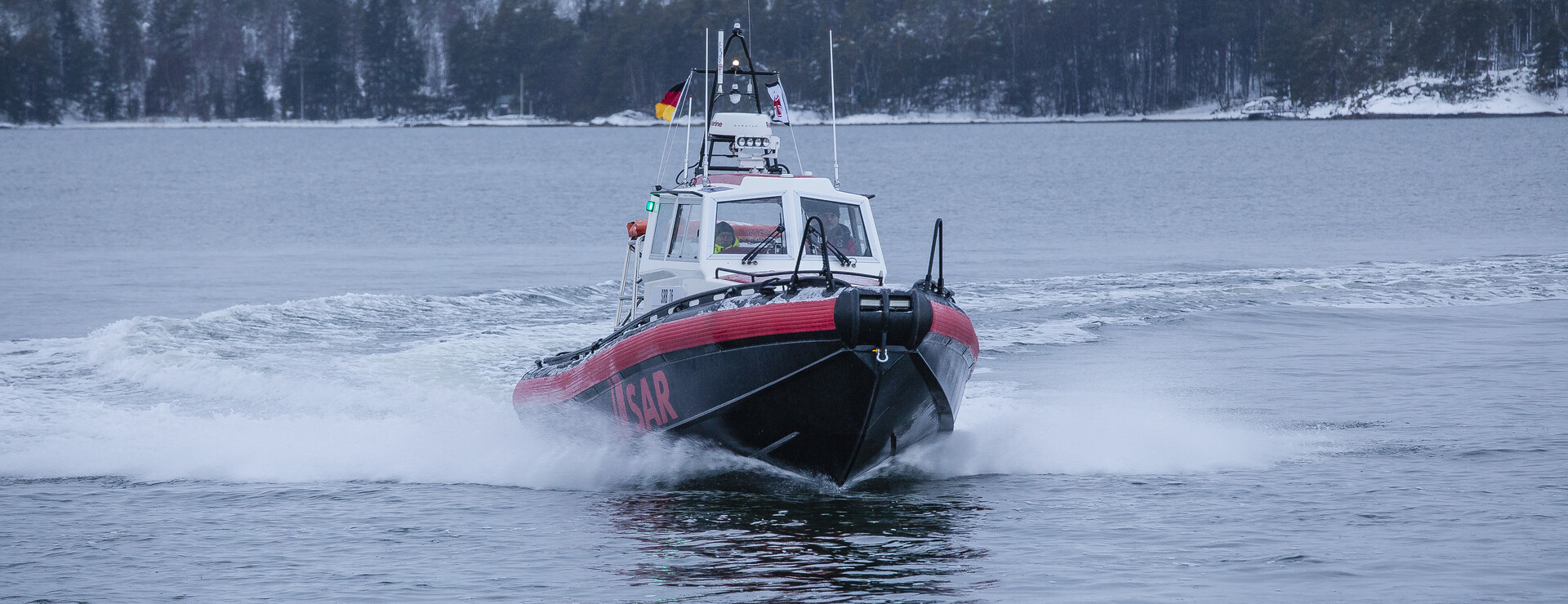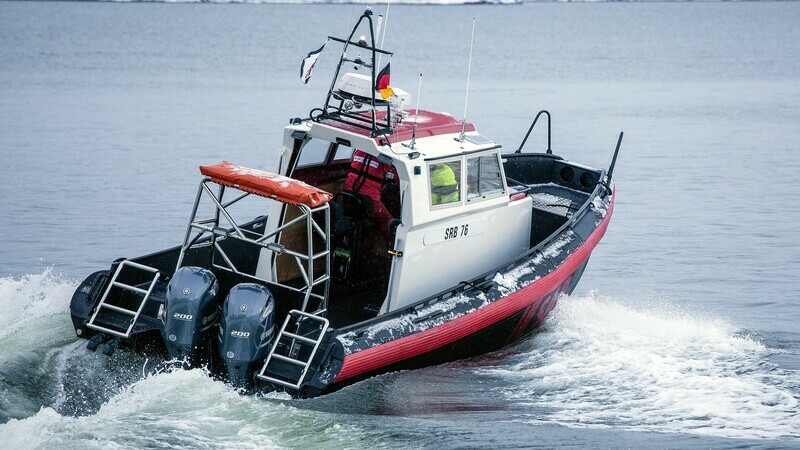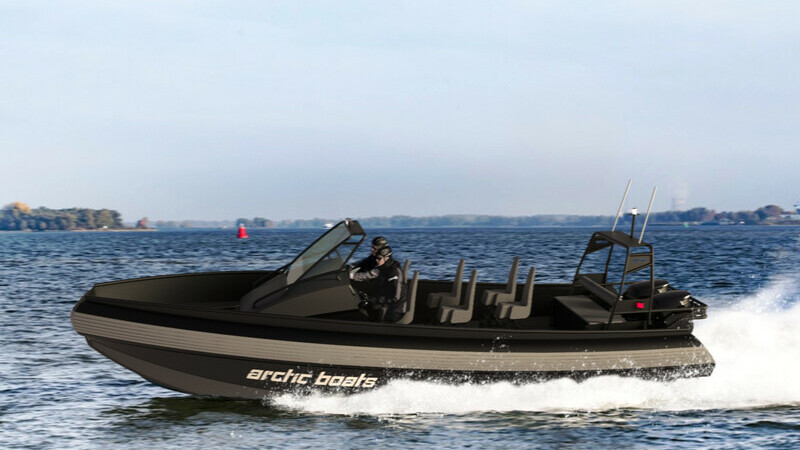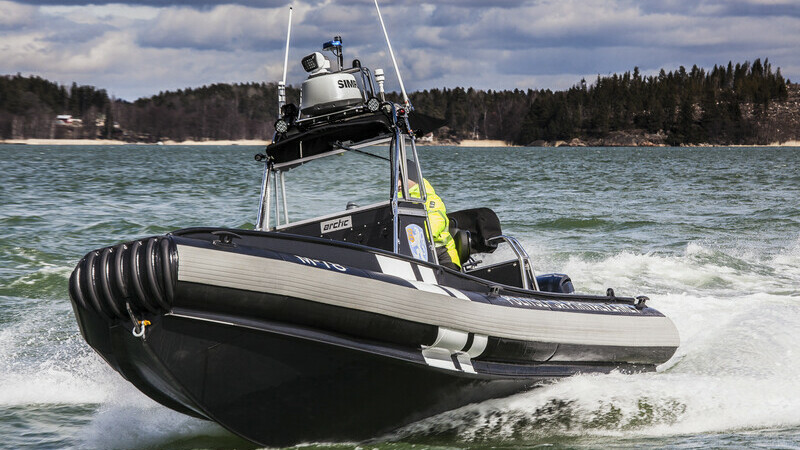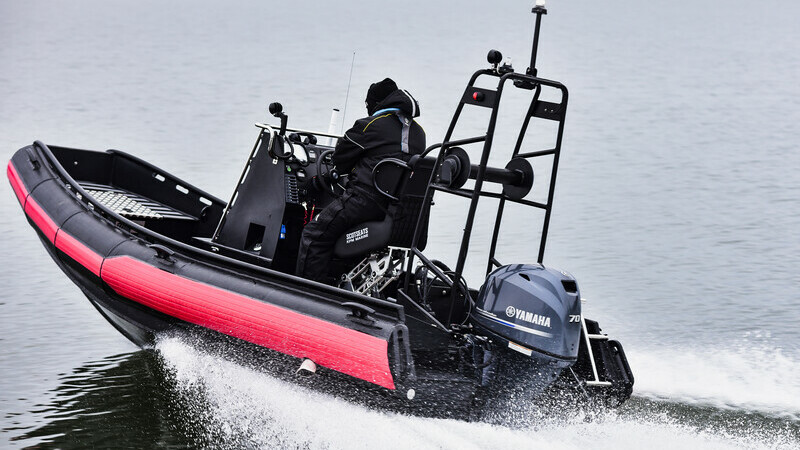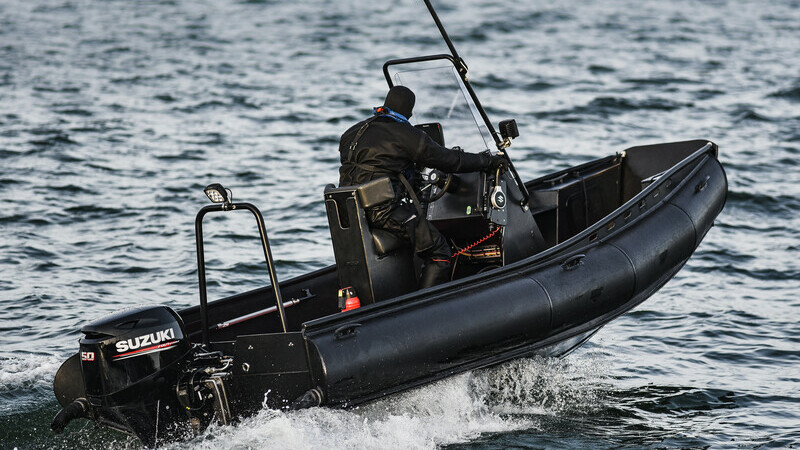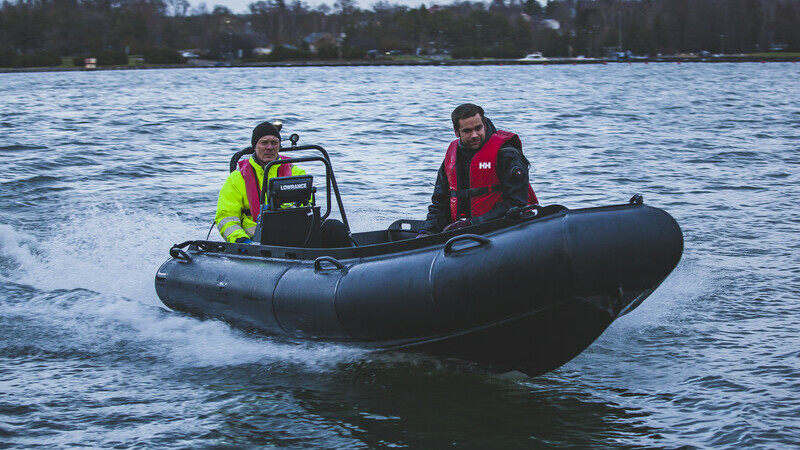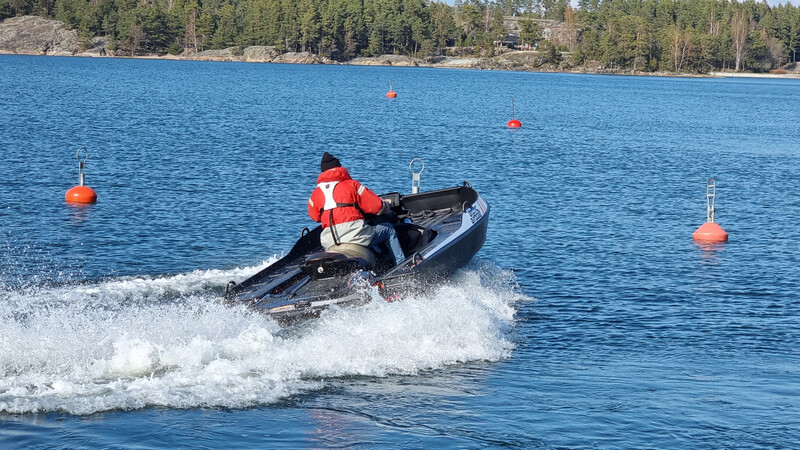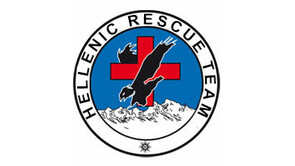Rigid Buoyancy Boats (RBBs)
Our Rigid Boyancy Boats represent a new kind of thinking in professional boats. Serving as an alternative for RHIB and aluminium boats. We have strived to make our boats virtually indestructible, fast, seaworthy and highly customized to our clients’ needs.
Arctic models
Search and rescue boats: Safe, extremely durable and easy to handle even in the most harsh conditions
Arctic boats are a result of continuous product development. Our boats are designed to serve professional crews in conditions where other boats struggle. They are tested in harsh conditions of Scandinavian 4 seasons on windy autumn, cold winter, rainy spring and hot summer. The use of high molecular weight polyethylene (HMWPE) and honeycomb like hull structure makes Arctic boats extremely strong and durable. The pontoons and most hull cavities are filled with flotation bags, which make our boats unsinkable. Even when water filled and fully loaded they remain extremely stable as the buoyancy is located at the sides. Artic boats are also very cost efficient because of reduced need for repair and a lifetime of up to 20 years.
Arctic 28 CAB
We have developed a cabin version of the 28 ft patrol boat. It is powered by 2x 200hp four stroke outboards. Inside, there are 4 jockey seats or helm seats and in the front part there is plenty of room for storing equipment and also a stretcher.
ARCTIC 28 SAR Boat
This 28 foot HMWPE boat is built on a multipurpose hull that can be customized to everything from a Luxury Tender, Patrol Boat or SAR fast boat.
Arctic 28 responder
This boat can be used as a military patrol boat or for adventure tours in harsh conditions. Safety of the crew is our main concern so the boat is unsinkable and extremely seaworthy.
ARCTIC 23 FT Patrol Boat
Developed from the Panther 22 model, the Arctic P 23 has an extended hull for greater carrying capacity. This enables bigger crew and equipment.
Arctic 17 SAR Boat
This little 17 ft Rescue boat has fantastic sea keeping capabilities! The boat looks like a RIB but is actually a Rigid Boyancy Boat, built completely of HMWPE
ARCTIC 4 LIGHT HDPE Boat
This is a new Arctic boat model specially developed for the Finnish Fire Rescue Brigades. The 4 meter boat is so light, it can be carried around by 4 people.
Arctic Jet Boat
Fantastic machine! Capacity 7 persons. Vastly expand the rescuing power of your PWC! Even at speeds over 40 knots the boat felt safe and predictable.
Arctic Mini Jetboat
Vastly expand the rescuing power of your PWC! - Capacity 5 persons. - Even at speeds over 40 knots the boat felt safe and predictable. - Fantastic machine!
Features
Our Rigid Buoyancy Boats (RBBs) represent a new sort of thinking in professional boats. Serving as an alternative for RHIB and aluminium boats – the HMWPE boat has an economic lifetime up to 20 years. This is made possible due to our polymer material which provides for better durability of the hull compared to GRP or aluminium. The polyethene polymer pontoons are more durable than inflatable rubber tubes and can be filled with flotation material for superior safety. The HMWPE D-fenders never need to be refilled or pumped with air.
In comparison to aluminium, the resistance of HMWPE to chemical substances is higher. The material offers great durability in many other areas – for instance running the boat ashore. Our HMWPE boats are welded from water cut sheets with double seaming, making the hull extremely strong. The material is 100% recyclable and there are no harmful gas emissions during the welding process.

Users across Europe
- Finnish Fire Rescue Brigades
- German Maritime Search and Rescue Service
- Hellenic Rescue Team (Greece)
- Police and Coast Guard of Estonia
- Finnish Fire Rescue Brigades
- German Maritime Search and Rescue Service
- Hellenic Rescue Team (Greece)
- Police and Coast Guard of Estonia

